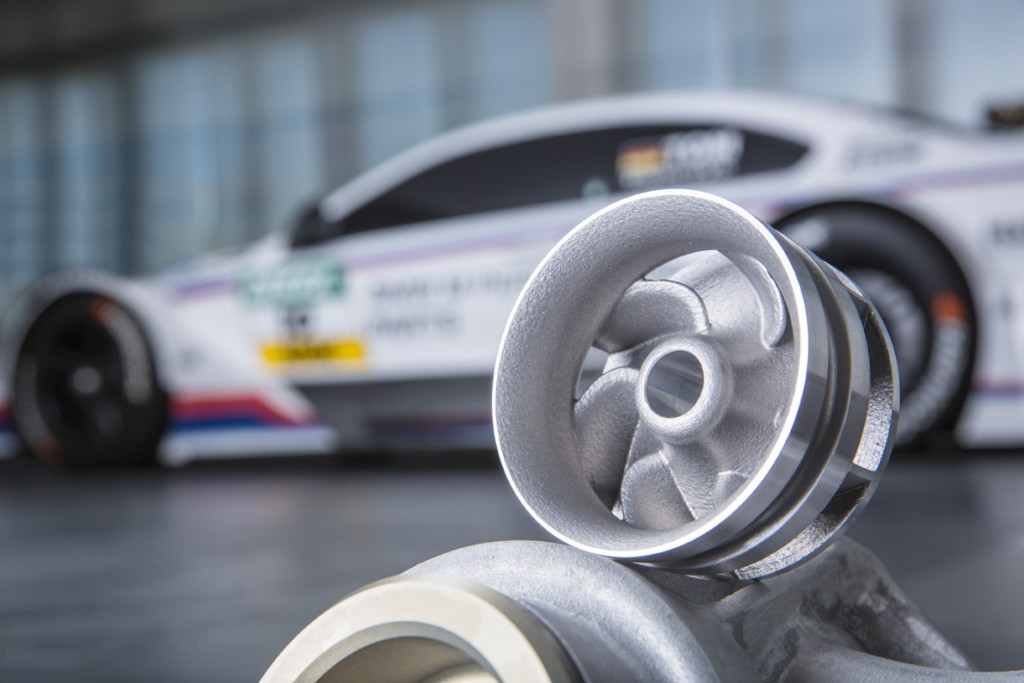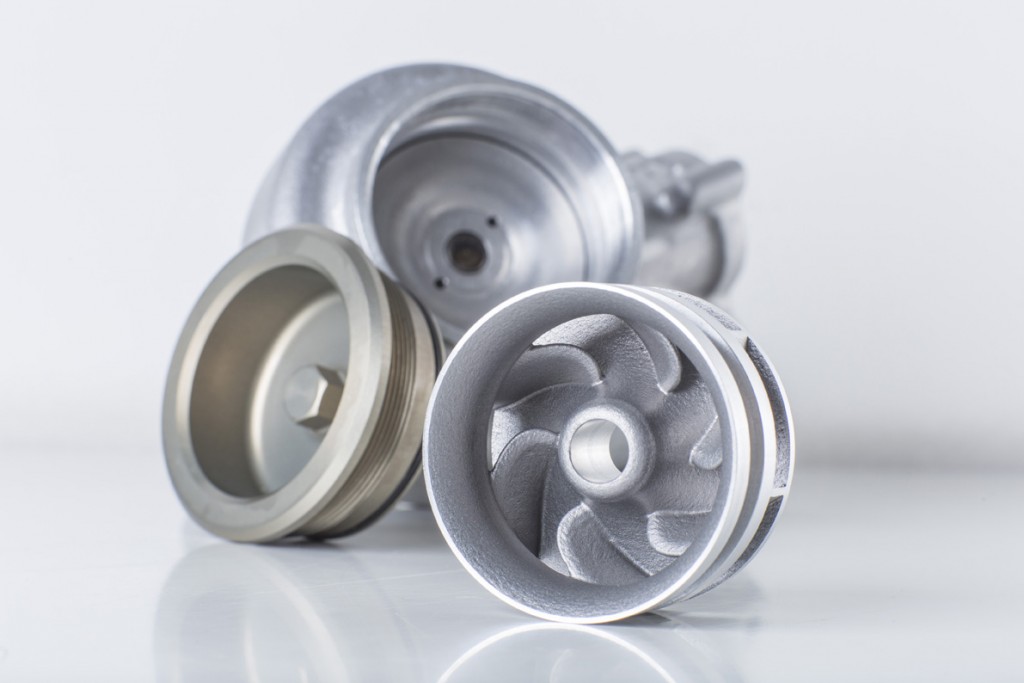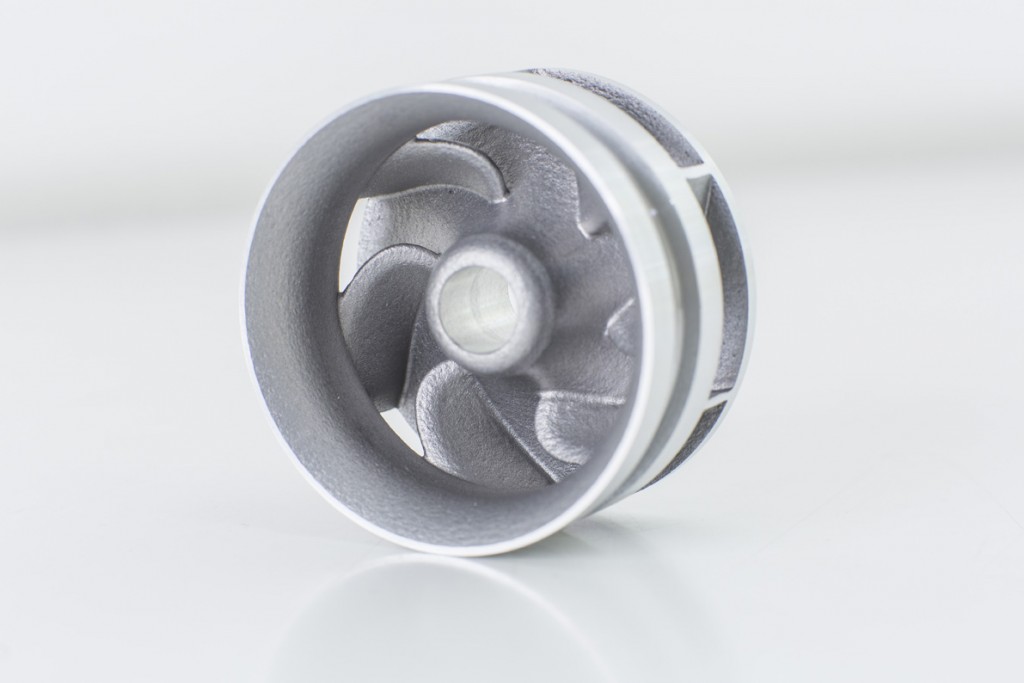The automotive industry began using 3D printing technologies long before most other industries did. In fact, BMW started using it in 1989, when the term ‘additive manufacturing’ (AM) was far more common than ‘3D printing’. Over the last two decades, the automotive giant has been among the pioneers in applying what it refers to as ‘generative production methods’. From 3D printing plastic parts to prototype concepts and to test and improve their manufacturing process, to direct part production of small volume parts in metal, BMW has explored the use of such technologies every step of the way.
Today, they’re celebrating their latest 3D printing milestone as the current season of the German Touring Car Masters (DTM) begins. One of BMW’s DTM racecars is carrying the 500th 3D printed water wheel pump as part of its powertrain. The pump is a metal part built using selective laser melting (SLM), where 0.05 millimeter layers of aluminum alloy powder are built up on a processing plate to form a durable, high-precision component.
In the world of motorsports, the powertrains can run up to 70 percent of the time under full load, with moving parts, in particular, having to withstand heavy stresses and extreme conditions. So, in 2010, the BMW engineering team looked to develop a one-piece, light-metal water pump wheel to replace the previous series plastic part. Given their expertise and experience with additive technologies, each and every one of the metal water pumps has performed flawlessly.
3D printing parts like the pumps is exactly where the technology shows its greatest advantage. Small batches of high precision, high accuracy parts that can be customized on the fly and produced cost-effectively. As BMW says, “It allows for the inclusion of design refinements in the six-bladed centrifugal pump wheel, whose implementation would require much greater effort with other production methods. With the new method, it was possible to achieve ideal aerodynamics of the component for the DTM race series. Secondly, no complex tools or molds were needed, which makes the demand-oriented production more cost-effective. On top of that, 3D printing ensures the dimensional accuracy of the water pump wheel over the entire production time. BMW applies the homologated high precision pat both in the DTM racecars and in the Z4 GT3 customer vehicles.”
The water pump wheel is just one example of the extent to which BMW has incorporated 3D printing as a key manufacturing process with wide applicability. Last year, they 3D printed custom ergonomic thumb supports for their car-plant workers to decrease the pain in and physically augment their fingers as the workers fitted car parts. They have also worked on bio-degradable concept cars and F1 style wheelchairs. Just drops in the ocean perhaps for a company that works on 25,000 prototypes annually and produces nearly 100,000 components in a year using additive manufacturing.





